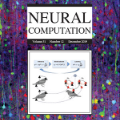Recent advances in the understanding of neural networks suggest that superposition, the ability of a single neuron to represent multiple features simultaneously, is a key mechanism underlying the computational efficiency of large-scale networks. This paper explores the theoretical foundations of computing in superposition, focusing on explicit, provably correct algorithms and their efficiency. We present the first lower bounds showing that for a broad class of problems, including permutations and pairwise logical operations, a neural network computing in superposition requires at least $\Omega(m' \log m')$ parameters and $\Omega(\sqrt{m' \log m'})$ neurons, where $m'$ is the number of output features being computed. This implies that any ``lottery ticket'' sparse sub-network must have at least $\Omega(m' \log m')$ parameters no matter what the initial dense network size. Conversely, we show a nearly tight upper bound: logical operations like pairwise AND can be computed using $O(\sqrt{m'} \log m')$ neurons and $O(m' \log^2 m')$ parameters. There is thus an exponential gap between computing in superposition, the subject of this work, and representing features in superposition, which can require as little as $O(\log m'$) neurons based on the Johnson-Lindenstrauss Lemma. Our hope is that our results open a path for using complexity theoretic techniques in neural network interpretability research.
翻译:暂无翻译




